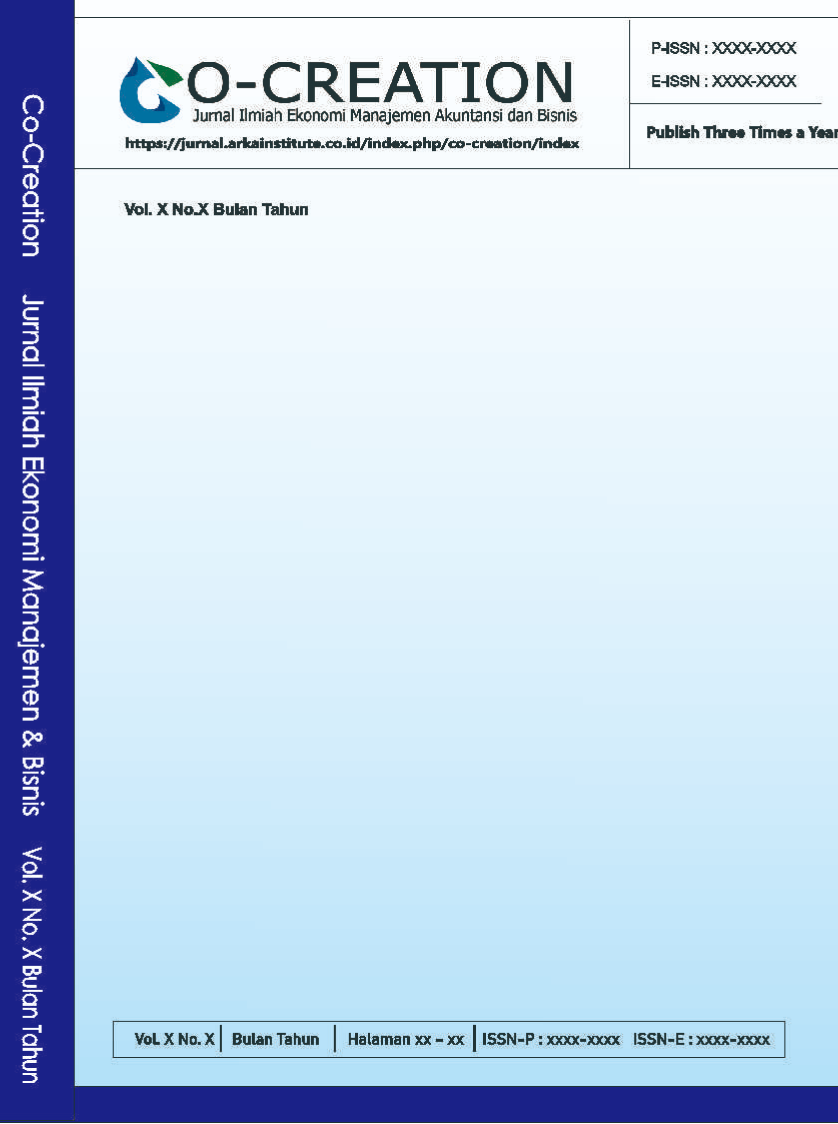The effect of per capita GRDP, HDI, and labor force participation rate on income inequality in Lampung Province 2019–2023
Main Article Content
Abstract
For a long time, many nations have struggled with the intricate issue of income disparity. Income inequality is a problem in a number of Indonesian provinces. Disparities in the economic well-being of a community are the root cause of income inequality. Income inequality in Lampung Province from 2019 to 2023 is the target of this research, which tries to pin down the relationship between GRDP per capita, HDI, and TPAK. The study makes use of panel data and quantitative approaches. Fifteen districts and cities in Lampung Province provide 75 samples for the panel data, which includes time series data from 2019 to 2023 as well as cross-sectional data. The following statistical methods are used in data analysis: F-test, t-test, coefficient of determination assessment, multiple linear regression, and classical assumption testing. The results show that from 2023 to 2029, the following variables have a significant impact on Income Distribution Inequality in Lampung Province: Gross Regional Domestic Product per capita, Human Development Index, and Labor Force Participation Rate. Income Inequality in Lampung Province 2019–2023, to a lesser extent, is affected by GRDP Percapita. Income Inequality in Lampung Province 2019–2023, to a lesser extent but still significantly, is affected by the Human Development Index. From 2019 to 2023, the income inequality in Lampung Province is affected, to a lesser but considerable extent, by the labor force participation rate.
Article Details
Section

This work is licensed under a Creative Commons Attribution-NonCommercial 4.0 International License.
How to Cite
References
Aditya, S. N. P. (2010). Analisis Ketimpangan antar Wilayah dan Faktor-Faktor yang Mempengaruhinya dengan Model Panel Data (Studi Kasus 35 Kabupaten/Kota di Provinsi Jawa Tengah Tahun 2000-2007). Fakultas Ekonomi Universitas Diponegoro. Semarang.
BPS Lampung. (2023). Gini Rasio Menurt Kabupaten/Kota Provinsi Lampung. Badan Pusat Statistik Provinsi Lampung. https://lampung.bps.go.id/id/statistics-table/2/NjMyIzI=/gini-ratio-kabupate-kota.html
Cendani, R., & Susilo. (2022). Analisis Faktor-Faktor Yang Berpengaruh Terhadap Ketimpangan Distribusi Pendapatan. Journal of Development Economic and Social Studies, 1(4), 629–641. https://doi.org/10.21776/jdess.2022.01.4.11
Gujarati, D. N., Mulyadi, J. A., Andri, Y., Barnadi, D., & Hardani, W. (2006). Dasar-dasar ekonometrika. Erlangga.
Janah, M. (2022). Analisis pengaruh tingkat pdrb perkapita, indeks pembangunan manusia, dan penanaman modal asing terhadap ketimpangan pendapatan di indonesia periode tahun 2019-2021. Profit: Jurnal Manajemen, Bisnis Dan Akuntansi, 1(4), 23–43. https://doi.org/10.58192/profit.v1i4.183
Kusuma, D. S. D., Sarfiah, S. N., & Septiani, Y. (2019). Analisis pengaruh produk domestik regional bruto (PDRB), inflasi, dan indeks pembangunan manusia (IPM) terhadap ketimpangan pendapatan di Daerah Istimewa Yogyakarta tahun 2011-2017. Dinamic: Directory Journal of Economic, 1(3), 282–293.
Nilasari, A., & Amelia, R. (2022). Pengaruh PDRB per kapita, indeks pembangunan manusia, dan tingkat partisipasi angkatan kerja terhadap ketimpangan distribusi pendapatan di Indonesia. Nomicpedia: Journal of Economics and Business Innovation, 2(2), 169–182.
Pradipta, A. I., & Wijaya, R. S. (2022). Faktor Yang Mempengaruhi Ketimpangan Pendapatan Melalui Pertumbuhan Ekonomi di Provinsi Daerah Istimewa Yogyakarta. Jurnal Ekonomika, 6(1), 110–122.
Pradnyadewi, D., & Purbadharmaja, I. B. (2017). Pengaruh IPM, biaya infrastruktur, investasi dan pertumbuhan ekonomi terhadap ketimpangan distribusi pendapatan di provinsi bali. E-Jurnal Ekonomi Pembangunan Universitas Udayana, 6(2), 255–285.
Rahmani, A. R. (2020). Pengaruh Gender Ratio, Dependency Ratio, Dan Tingkat Partisipasi Angkatan Kerja Perempuan Terhadap Kemiskinan Di Provinsi Nusa Tenggara Barat Tahun 2010-2017. Jurnal Ilmiah Mahasiswa Feb, 9(2).
Sari, Y. A. (2021). Pengaruh Upah Minimum Tingkat Pengangguran Terbuka Dan Jumlah Penduduk Terhadap Kemiskinan Di Provinsi Jawa Tengah. Equilibrium : Jurnal Ilmiah Ekonomi, Manajemen Dan Akuntansi, 10(2). https://doi.org/10.35906/je001.v10i2.785
Suhendra, I., Istikomah, N., Ginanjar, R. A. F., & Anwar, C. J. (2020). Human capital, income inequality and economic variables: A panel data estimation from a region in Indonesia. The Journal of Asian Finance, Economics and Business, 7(10), 571–579.
Sukirno, S. (2008). Teori Pengantar Makroekonomi (3rd ed.). PT. Raja Grafindo Persada.
Sunanda, S., & Hasmarini, I. M. I. (2017). Ketimpangan Perekonomian Di Provinsi Bengkulu Dan Faktor-Faktor Yang Mempengaruhinya (Tahun 2011-2014). Universitas Muhammadiyah Surakarta.
Todaro, M. P., & Smith, S. C. (2011). Pembangunan Ekonomi (11th ed.). Erlangga.

